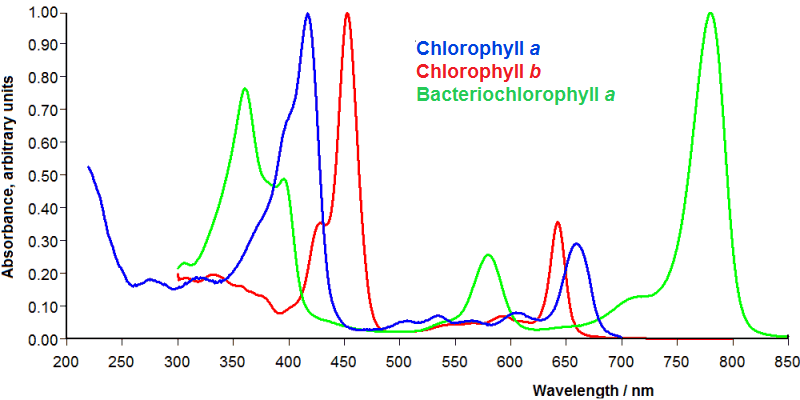4. Absorption and scattering
Absorption photometry (5/6)
Absorption spectra of pure substances
There is a whole lot of scientific literature which documents the absorption of light by organic and inorganic materials and connected topics. Such data is the base for chemical analysis with optical methods. A selection is found in the Literature References.
On the internet, many research facilities would provide databases for the public which are easily accessible through seaching engines and suitable key words. Those can be 'absorption of pigments', 'photochemistry', 'aromatic hydrocarbons' for instance.
The following graphic illustrates the spectral absorbances of some plants' pigments which have been obtained from an online database and subsequentially edited for the graphics.

Source: PhotochemCAD
The databases allow to download absorption spectra in the form of numerical lists and to generate graphics from them. The experimenters and the literature in what they published their results is usually well documented.

Source: Wikipedia
